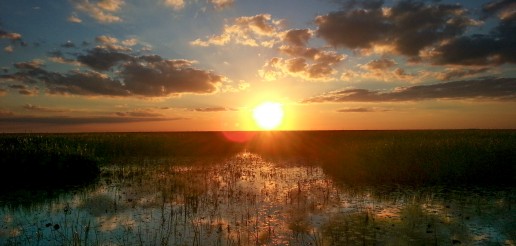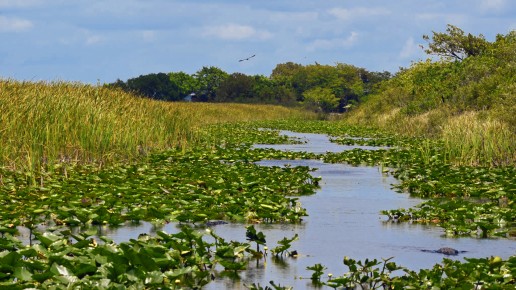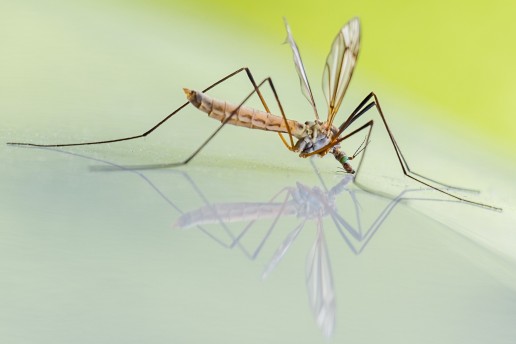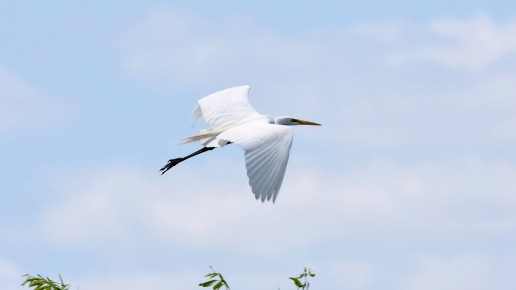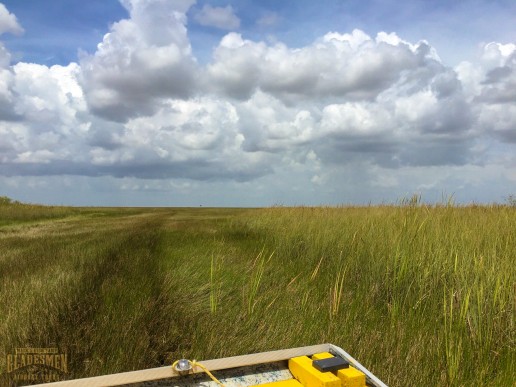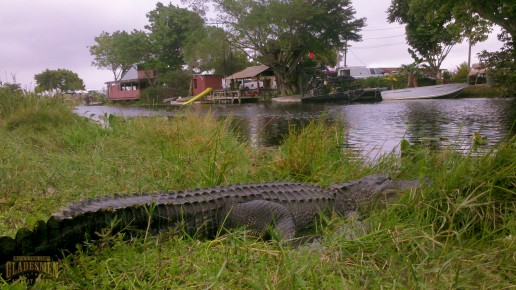Everglades Airboat Tours: Summer Fun Close to Home!
Going into late July, we’re entering the dreaded “Dog days of summer” in South Florida. You’ve probably taken a family summer vacation out of town, and the kids will be headed back to school in a few weeks. With summertime running out and starting to drag, you might be feeling the itch for one more adventure. So, why not seek it in your own backyard? Everglades airboat tours are a great way to have some late summer family fun in Florida without the theme park price tag
Exciting and Educational All Ages Fun
Taking an airboat ride in the Everglades can be a blast for all ages. Young or old, toddler or teen, Everglades airboat tours provide excitement and exploration for all ages. With a born and bred, fifth-generation Gladesmen as your guide, you’ll learn a lot about the Everglades ecosystem and the over 350 animal species that thrive here.
Theme Park Thrills Without The Lines
While Florida theme parks are bursting with attractions and rides, they’re also bursting with large crowds in the summer. Lines and wait times can be up to 2 hours long for rides that last for only a few minutes. In South Florida, the Everglades is a hidden gem just west of the sunny beaches of Fort Lauderdale, Hollywood, and Miami. When you come to take a private airboat tour at Mack’s Fish Camp, the ride is waiting for you, never the opposite.
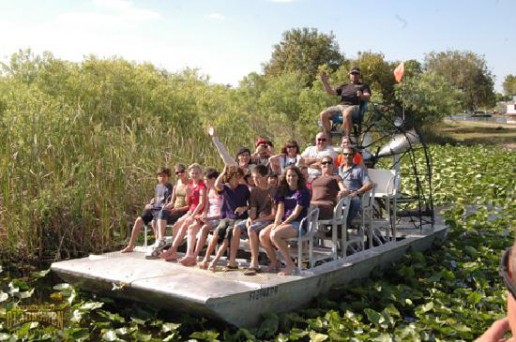
With the many northern visitors Florida receives during the winter, it’s no secret that Florida is warm year-round. The increased humidity coupled with rising temperatures can make even a trip to the beach a tiring ordeal, and The Everglades can feel the heat, too.
In the summer, Everglades airboat tours are best-enjoyed in the morning until noon and in the late afternoon. In addition to the temperature being more hospitable to people then, much of the Everglades wildlife, like the many bird species residing here, are more active then. Also, if you take an airboat ride later in the day, you can witness a vivid, wildly colorful Everglades sunset.
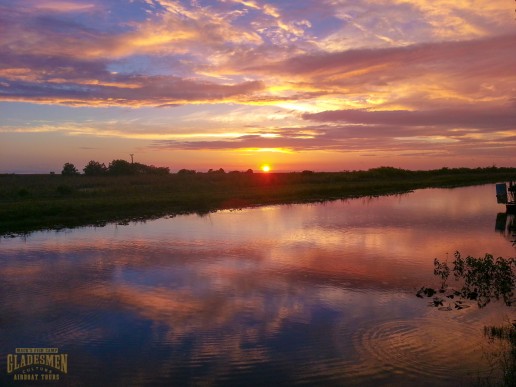
Beat the Heat and See Real Florida Magic
Time and money can take on more importance as summer break draws to a close. Even with the school year looming large, you want to make good use of that extra time with your family. If you live in South Florida, taking an airboat ride at Mack’s Fish Camp in the Everglades is an exciting and affordable way to do that while staying close to home.
5 Everglades Plants You Should Know About
There are several different habitats that make up the Florida Everglades, each with its own distinct plant life. The biodiversity of Everglades plants in these habitats promotes the equally diverse animal life that resides in them. The flora found in the Everglades ranges from beautiful, to strong, and in some cases dangerous. Here are 5 standout Everglades plant species you should know about before your visit!
Everglades Flowers
Spider Lily – This Florida native is easily identified by its long, white, curving sepals and pedals, that are connected by a gossamer web. These fragrant Everglades Flowers are found growing in swamps, marshes, and hammocks year-round, and are very drought resistant.
Ghost Orchid – There are several orchid species growing in the Florida Everglades, but the ghost orchid is considered a symbol of the lush variety of Everglades plants. It has long, delicate, white petals, and due to its complex shape, can only be pollinated by the sphinx month. Found in cypress swamps, these Everglades flowers use their massive, tangled roots to cling to palm, pond apple, and cypress trees.
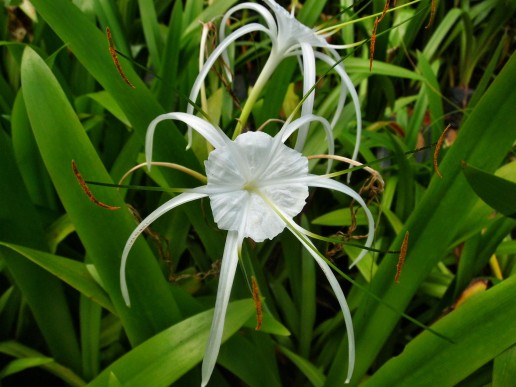
Everglades Trees
Cypress Trees – This is tree is the most flood-tolerant of Everglades trees. Found in swamps and in tree islands on marshes, cypress trees have large ”knees” that protrude as high as 6 feet above their roots. These knees allow for oxygen to reach the roots and support the trees in water-logged soil.
Mangrove – This rooty plant is located toward the coastal areas of the Everglades. Mangroves act as a buffer between the saltwater of the coast and the freshwater marshes. Their strong roots help reduce soil erosion from ocean currents, block waves, and restore the soil through their cycles of growth.
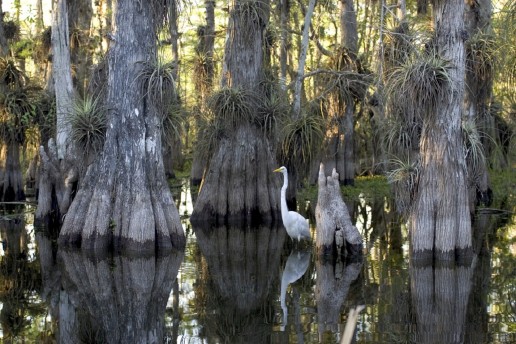
Poisonwood – The Tree to Avoid
The Everglades have many plants to behold, but also a few you should try to avoid. The poisonwood tree is best identified up close by their teardrop-shaped leaves outlined in yellow, which appear to droop from its branches, but watch out! The tree contains 100 times more poison in its bark, sap, and leaves than poison ivy, and touching them can cause skin inflammation and blisters.
It’s best to avoid hiking in the Everglades hammocks in the rain, because the sap from a poisonwood could drip on you. The safest way to view poisonwood trees is on an Everglades airboat tour from a safe distance, because any contact with them should be avoided.
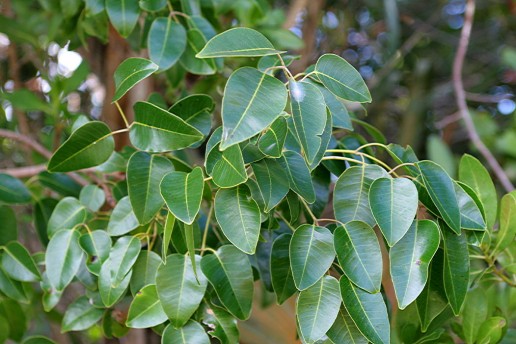
The various habitats in the Everglades promote a wide range of unique plant life here. The many Everglades plants growing here range from resilient, to pretty, and also hazardous. But by exploring the Everglades on a hike or private airboat tour can give you the chance to see several of them.
Mosquitoes In The Everglades
Mosquitoes are easily the most disliked animal in the Florida Everglades. Their buzzing and biting makes them a nuisance to people, especially during the Everglades wet season. While taking an Everglades eco tour, you may be surprised to learn that even they play a part in maintaining their environment. But here is some information about these insects to help you understand them and prepare for them before your Everglades visit.
Some Information About Mosquitoes
Mosquitoes are easily are most abundant during the Everglades wet season from May through summer. But their numbers drop significantly during the drier winter months. The wet summer months see peak mosquito activity because both their larvae and eggs can only thrive in water.
Male mosquitoes only feed on flower nectar.
Females bite animals for protein to develop their eggs.
A nuisance only to humans, the mosquito is a vital link in the Everglades food web. By laying their eggs in the water, their larvae are a food source for fish, turtles, frogs, wading birds, and other insects.
Mosquito Safety In the Everglades
Given the abundance of mosquitoes in the Everglades, you should take precautions to avoid their bites as best you can. When you take an Everglades eco tour or any other private airboat tour at Mack’s Fish Camp, we do provide bug repellent. But here are some tips to avoid mosquito bites when you visit the Everglades.
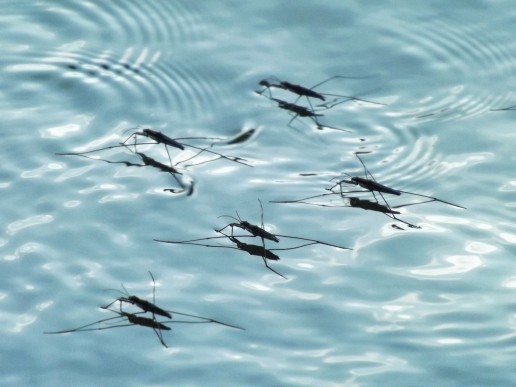
- Stay in the sun and avoid shaded areas. Those tiny vampires love shady spots.
- Don’t breathe… heavily. Mosquitoes are attached to carbon dioxide, and the harder you breathe out, the easier it is for them to find you.
- Wear light colored clothing. In addition to being a good fashion choice for the Florida sun, mosquitoes are less attracted to them. They are drawn to darker colored clothes like navy blue, black, or red.
- Avoid dense vegetation and bodies of standing water. Mosquitoes are concentrated in these areas (vegetation) or are their breeding grounds (water).
The Everglades is Zika-Free
While they are known carriers of disease, there have been no reported cases of mosquitoes in Everglades carrying the Zika virus. In fact, after collecting over 400,000 mosquitoes in the Everglades, a team of Yale scientists found no Aedes egyptii species, the known carriers of Zika.
Though considered a pest to people, mosquitoes are a valued part of the Everglades ecosystem. If they prove too overwhelming when you visit the Mack’s Fish Camp, then maybe you should explore it on an Everglades eco tour. A mosquito may be able to fly 40 miles for a snack, but it sure can’t keep up with an airboat!
Everglades Snakes
The Florida Everglades can evoke images of many different animal species like alligators and egrets, but not snakes so much. Among the hundreds of species of Everglades wildlife that dwell here, there are 29 species of snakes, only 4 of which are venomous. They may not stand out like a roseate spoonbill or a bull alligator, but you could spot one lurking in the marshes and tree islands on an everglades airboat tour.
The Everglades offers the exciting opportunity for all visitors to see a unique environment and the animals that live there up close and in person. Like the other wildlife here, snakes play a vital role in the ecosystems of the Everglades. Whether you’re looking to visit the ‘glades, are just curious about Everglades snakes, and maybe wondering which ones to avoid, here’s some information about these reptiles.
Non-Venomous Everglades Snakes
Red rat snake – these constrictors can climb trees and are found in hardwood hammocks. Their reddish-orange to brownish-yellow patterning outlined in black makes them easy to spot. But, they’re known to spend time underground mostly.
Eastern Garter Snake – Averaging at 18-26 inches long, these snakes are recognized by the three yellow stripes that run down their bodies. They prefer moist areas like the sawgrass marshes to feed on small frogs, fish, and salamanders.
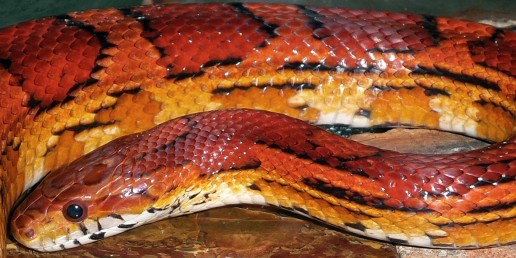
Scarlet King Snake – This snake bears a strong resemblance to the highly venomous coral snake, but is distinguished by its red, pointy nose. It gets its royal name because it can eat venomous snakes without being affected by their venom.
Burmese Python – This exotic invasive species has recently passed the American Alligator as the apex predator of the Everglades. With an average length of 10 – 18 feet, the Burmese python is the third largest living snake in the world! These snakes arrived in the Everglades as abandoned pets.
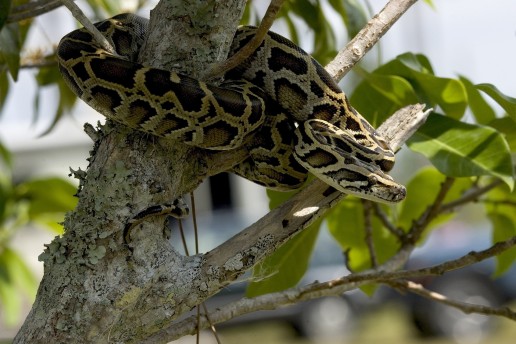
Venomous Everglades Snakes
As was mentioned earlier, there are only 4 species of venomous snakes that reside in the Everglades.
Coral Snake – A pretty sight to behold, the coral snake is a bright and colorful blend of red, black, and yellow. Preferring to stay underground, they are rarely spotted and difficult to see. Though they account for less than 1% of all snake bites, the coral snake is highly venomous.
Pygmy Rattlesnake – pygmy rattlesnakes have thick, greyish bodies with dark blotches on their backs, making them hard to spot. They are among the smaller species of rattlesnakes, averaging between 14-22 inches long. Pygmy rattlesnakes prefer swamps and sawgrass marshes, but can be found in other habitats.
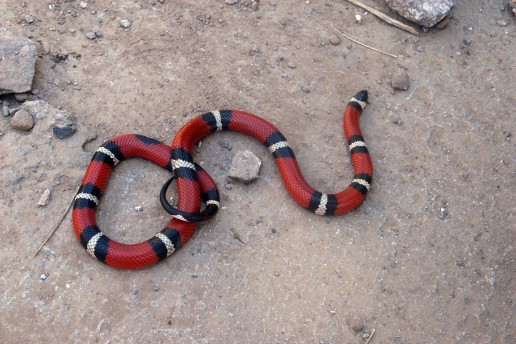
Florida Cottonmouth – Also known as the water moccasin, the Florida Cottonmouth is the only venomous water snake in North America. The Florida Cottonmouth can be identified by the dark bands that run down from each eye and their dark reddish to greyish, thick bodies. These strong swimmers are found in other habitats.
Eastern Diamondback Rattlesnake – Reaching up to 7 – 8 feet long, the Eastern Diamondback Rattlesnake is the largest venomous snake in North America. They are tan to greyish with a black diamond pattern on their backs, and their tails are tipped with a large rattle. Diamondback Rattlesnakes can be found in the drier habitats of the Everglades, like sandhills are hammocks.
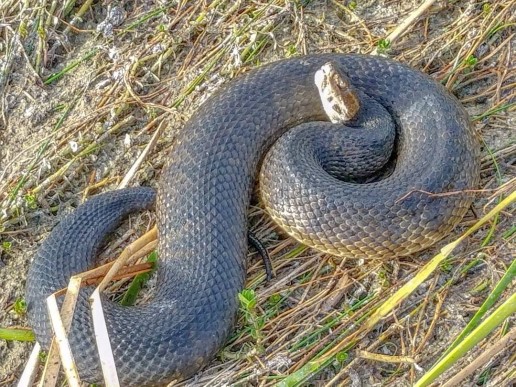
As menacing as they may look to some, snakes play their part in the Everglades food web. Everglades snakes regulate insect and rodent populations, and even other venomous snakes by eating them! Though they are often shy, you’re likely to see them among the many other varieties of wildlife on an Everglades airboat tour at Mack’s Fish camp.
Invasive Species in The Everglades
Thousands of native plants and animals reside in The Florida Everglades and help its habitats to thrive. But as massive as the Everglades is, all 1.5 million acres, it is vulnerable to invasive species that can harm the ecosystem here. Here is some information on some of this non-native Everglades wildlife, but you’re probably wondering…
What is an Invasive Species?
An invasive species is a plant, animal, bacteria, or other living thing that is non-native to the place it inhabits. They can grow and multiply quickly, and are harmful to their non-native habitat, the health of humans, even the economy of the places they invade. Invasive species can interrupt their adopted environments severely, and can even cause Everglades plants and wildlife to go extinct.
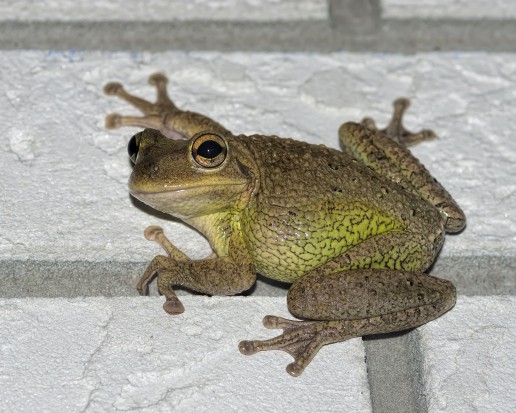
Invasive species have entered the Everglades by:
- Being released by local pet owners that don’t want to care for the anymore
- Being brought to Florida by or to sell on black markets
- Hitching a ride with travelers or foreign ships arriving in our ports

How Invasive Species Enter the Everglades
Invasive species can and have impacted the Everglades in several ways. The Burmese python has become well-known throughout America for feeding on native animals, including the American alligator, making them the dominant, or apex predator of the Everglades. Burmese pythons also pose a threat to people living near the Everglades, along with their pet dogs and cats. They often eat the young of native species, which shrinks the populations of their prey over time.
Invasive Everglades Plants
There are also invasive plant species impacting the Everglades as well. The Old world climbing fern affects several Everglades habitats from cypress swamps to pineland forests. Climbing ferns grow in dense concentrations which can smother native plants and rob them of sunlight. They can also act as a ladder to fires and draw them up to the canopy of the forest, burning areas that would normally be spared. This invasive plant can even change the water flow of streams with its dense roots, which can significantly affect Everglades ecology.
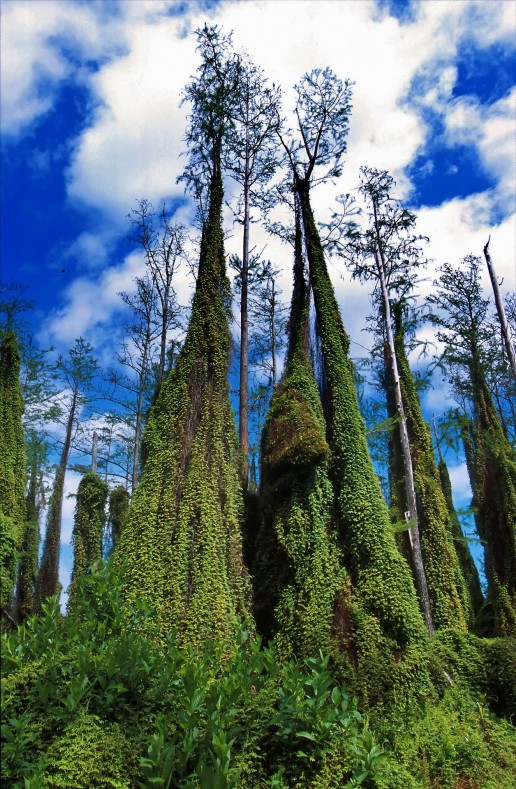
How you can help
- DO research before buying an exotic pet. Understand its needs, lifespan, how big it can grow, and if it is safe to own.
- DON’T release your pet into the wild if you no longer want it. This applies to fish and aquatic plants, too.
- REPORT invasive species sightings by calling 1-888-IVE-GOT-1 or online at www.IveGot1.org
At Mack’s Fish Camp we enjoy having the privilege to share the beauty of the Everglades ecosystem with the world. We see the preservation of this environment and the Gladesmen Culture as one in the same. We also educate our visitors about Everglades ecology, including invasive species on our Everglades airboat tours.
Birds You'll See on an Everglades Eco Tour
South Florida is known for its incredible biodiversity, and this is especially true regarding Everglades bird species. The famous naturalist John James Audubon, for whom the National Audubon Society is named, was in awe of Florida’s birds, saying how “The air was blackened by whistling wings.” There is a variety of types of birds to be found on an Everglades eco tour, such as wading birds, birds of prey, migrating birds, and land birds.
Everglades Wading Birds
Wading birds are named for how they wade in shallow water to stalk their prey, making the River of Grass an ideal habitat for them. During the Everglades dry season, which lasts from December to late May, they congregate in large groups to mate and nest. Wood storks, egrets, Great Blue Herons, ibises and roseate spoonbills fill both the sky and sawgrass marsh when the water levels are at their lowest.
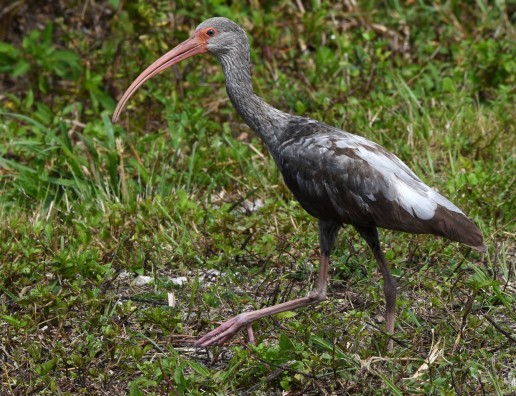
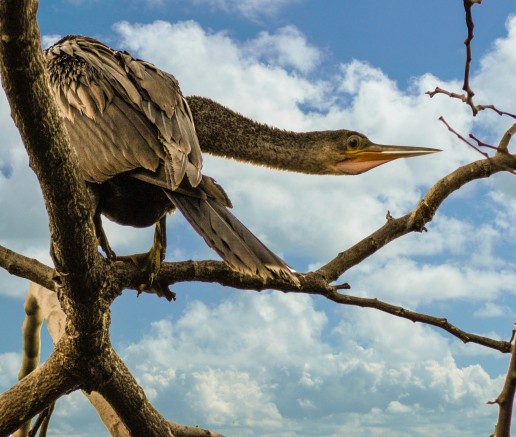
You may notice another long necked bird with a pointy beak swimming and diving in deeper water before emerging with fish in its mouth, the anhinga. Anhingas, nicknamed “snakebirds” for how they swim with their long, snake-like necks above the water, are actually water birds despite their similarity to wading birds.
Birds of Prey in the Everglades
Anhingas and herons do look cool while they hunt, but can pale in comparison to the swiftness and power of birds of prey that reside in the Everglades. These impressive raptors hatch during the dry season just like wading birds, but they’re off any hunting on their own by four months of age, as is the case of the red-shouldered hawk. Ospreys are another exciting bird of prey to watch, preferring to hunt fish by diving down with outstretched claws to snatch them up.
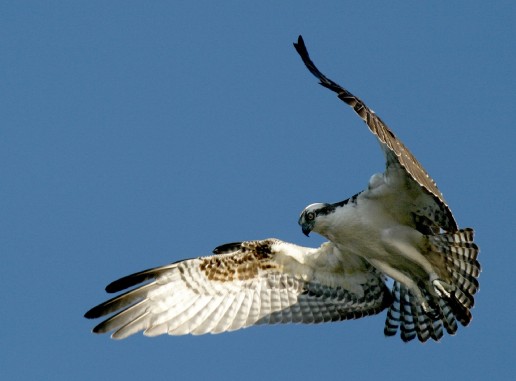
Migrating birds vacation here, too!
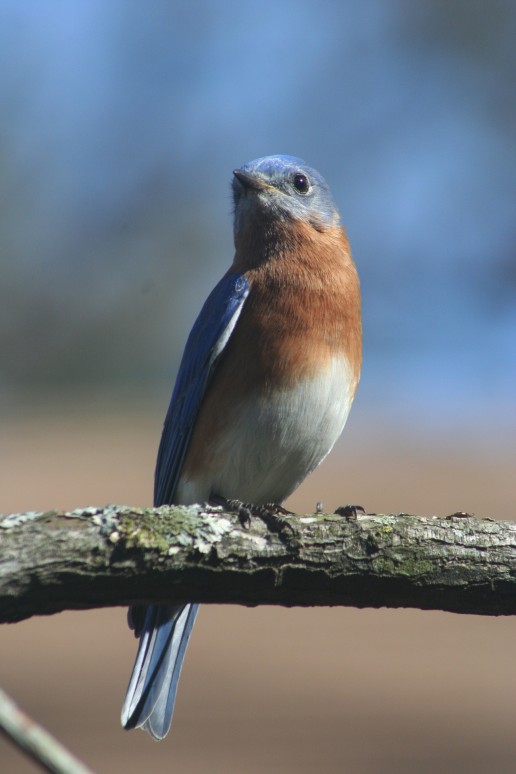
Residents of South Florida playfully refer to tourists that visit here in the winter months as “snow birds”. Local birdwatchers see plenty of the feathered version in the Everglades around this time as well. The native beauty of purple gallinules and roseate spoonbills is complimented by migratory birds like cardinals and eastern bluebirds.
Regardless of season, you can see plenty of Everglades birds and wildlife near Miami at Mack’s Fish Camp. If you’d like to know more, please contact us online or call us toll-free at 786-536-7400. Or you can book an Everglades eco tour online.
Things to Bring on an Everglades Airboat Tour
Taking an Everglades airboat tour is an exciting way to explore this hidden part of Florida. But it’s important that you bring everything you need to have a fun trip. Before you embark on your adventure here at Mack’s Fish Camp, make sure that you have these essentials.
Comfortable Clothing – An airboat ride is a casual affair, so there’s no need to dress up. Wear comfortable, loose-fitting clothes. Long-sleeved shirts and pants can deter bugs, but could be uncomfortable in the Florida heat and humidity.
Water – It’s true that the Everglades is a source of drinking water, but the water you’ll be seeing on the tour isn’t really drinkable. Bring a water bottle to stay hydrated.
Polarized Sunglasses – UVA/UVB sunglasses can protect your eyes from harsh solar rays. Polarized lenses reduce glare, which will make it easier for you to spot Everglades wildlife.
Camera – Your airboat tour guide will bring you up-close to some unique Florida wildlife, and more will appear on your trip. Snap some photos to show off the epic scenery to your friends.
Binoculars – Not all animals you notice may be too easily seen. Bringing these can help you to better see things like bird nests from far away.
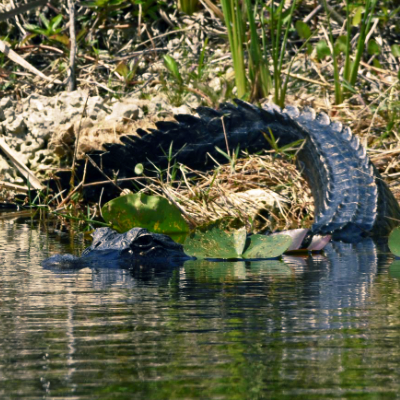
The following items are all provided and included with your Everglades airboat tour, so if you meant to bring them but forgot, we’ve got you covered!
Sun Screen – Florida can definitely live up to its nickname of “The Sunshine State”, and that sunshine can even cause sunburns on cloudy days. Applying some sunscreen can keep a sunburn from being one of your memories of the ride.
Raincoat / Poncho – That sunshine can switch to rain quickly in Florida, especially during the summer months. So it’s a good idea to keep a raincoat on-hand.
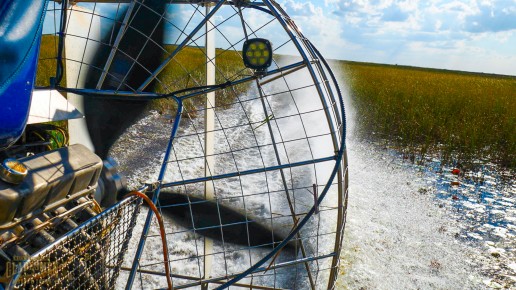
Insect Repellant – Bugs can be as abundant as gators and ibises out here. This item can be helpful if you opt to wear shorts or a t-shirt.
Hearing Protection – Because airboat motors get very loud, we always carry ear muffs to provide comfortable, over-ear protection.
Having these items will help you to enjoy an Everglades airboat tour comfortably and safely. But make sure not to bring any loose-fitting clothing that could get blown away by the wind. If you have any questions about our airboat tours, please contact us at 954-536-7400
See the Everglades or the Beach: Why Not Both?
Many people travel from all over the world to South Florida and visit the beaches in Fort Lauderdale and Miami, and some aren’t aware that the Everglades even exists! Other people who visit Florida are aware of the Glades and snub it entirely, preferring the sea and sand. Being such different places, both have their individual appeal, and we see the Everglades as the overlooked side of the same sunny coin that is Florida.
A Crowded Coast and an Open Wilderness
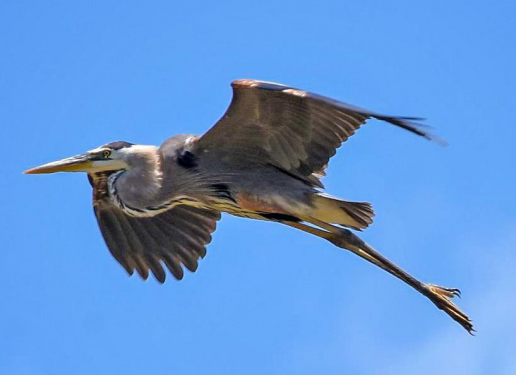
Spending a day at the beach, having the tides wash over your toes can be quite relaxing, but the crowding of the area can reduce that significantly. Out west, past the city and sprawling suburbs, lies 1.5 million acres of undeveloped wilderness that are home to 350 species of birds and 23 endangered and threatened species.
When you’re visiting the coast, the calm of the sea can be overtaken by the noise and clutter of the city, which can be as tiresome as it is charming. For what the Everglades lacks in creature comforts, it more than makes up for in a sprawling landscape waiting to be explored on a private airboat tour.
A Private Airboat Tour: Relaxation and Exploration
Several different habitats make up the vast ecosystem of the Everglades, making it a great place to explore and compliments the static calm of the beach. Camping, hiking and canoeing are all great ways to discover the ecology of Everglades wildlife. Taking a private airboat tour is an exciting way to see the best areas of the River of Grass up close!
Another great way to immerse yourself in the Everglades is to go on a guided fishing charter. You get all of the relaxation of fishing on a beach pier or jetty while venturing into a part of Florida seen by few people.
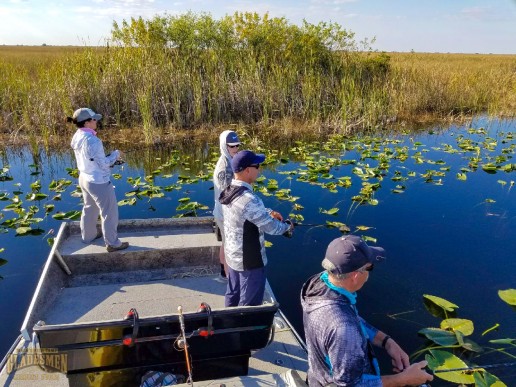
Much to do, and more to see!
The beach has some wildlife, but save for seagulls and pelicans the few animals there are most active at dawn before people start showing up. The Everglades is home to several species of birds, amphibians and reptiles, including the iconic American alligator.
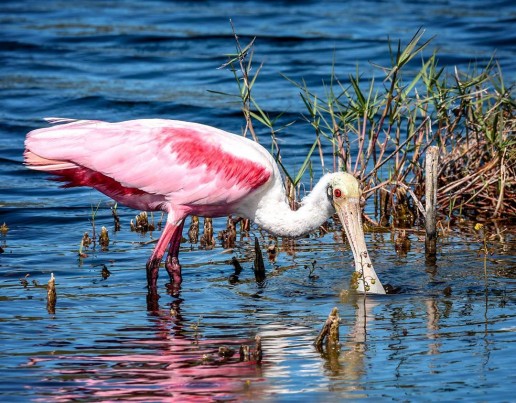
Wading birds like the Great Blue Heron, wood stork, and roseate spoonbill nest here in droves in the winter and raise their young into late spring. Once the wet season begins in June, alligators, frogs and turtles become more visible.
Beauty is in the eye of the beholder, and in South Florida there is plenty of it all around. Some of it is hiding in plain sight, just as easy to miss as it is rewarding to find. When you take a private airboat tour at Mack’s Fish Camp, you’ll discover a hidden treasure more valuable than gold: adventure!
Bizarre Foods In the Everglades
Residing in the vast wilderness of the Florida Everglades, for five generations the Gladesmen Culture has endured by living off of the land. The many different habitats here have provided us with a great bounty of food from both the land water. A few years ago, TV host Andrew Zimmern cam to Mack’s Fish Camp to sample some Gladesmen cuisine as part of his Travel Channel program, “Bizarre Foods”.
The Other Florida
In the episode “The Other Florida”, Andrew spent the afternoon with Keith and Marshall Jones, who were happy to share a glimpse of Gladesmen Culture with the world (You can watch it here). They took an airboat ride into the Everglades to show Andrew the land they call home. They also grabbed a few resources from it that they call supper in the Glades, some Bracken fern fiddleheads to have as a side dish. For an entrée, Marshall made fried and grilled frog legs from the haul he and Keith had caught frog gigging the night before.
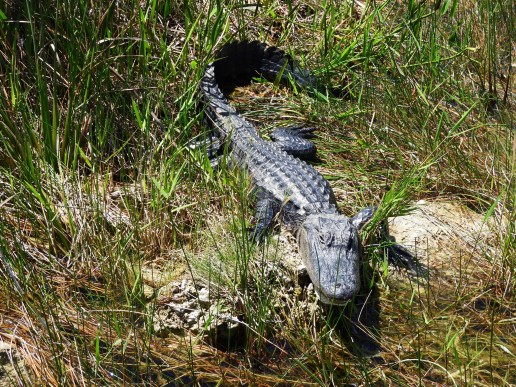
It's Not TV, It's Gladesmen Culture
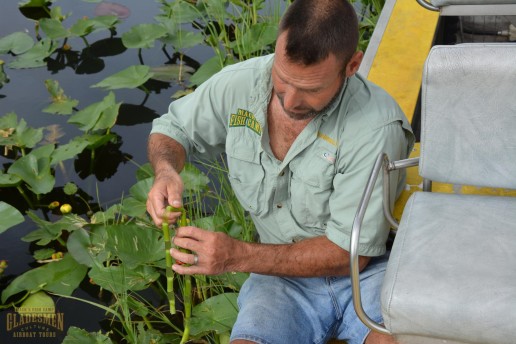
All in all, Andrew had a great time visiting and exploring our “Other Florida”, and found our distinct cuisine to be as delicious as it was bizarre. Anyone who comes to the Everglades and dines on the wild plants and game animals here usually finds them to be a real treat! But the Gladesmen living here have thrived on those foods, with marshes, sloughs, and hammocks acting as their grocery store.
Florida gets its name for being full of flowers, and there are plenty of flowers and plants growing in the Glades, many of them good for eating! Amaranth, dollarweed, and Bracken ferns can make for great salad greens. A few wild Florida plants can be used to make tea also, such as blackberry leaves, roots and bark from sassafras, or young pine needles.
Try this at home, VERY carefully
When preparing wild plants, it’s important to how to make and consume them safely in some cases. For the fiddlehead (Bracken) ferns we cooked for Andrew Zimmern, we made sure to blanch them in salt water then shock them in ice water. Doing this greatly reduces certain chemicals in them that while not poisonous or toxic, can be harmful if eaten over time or too frequently.
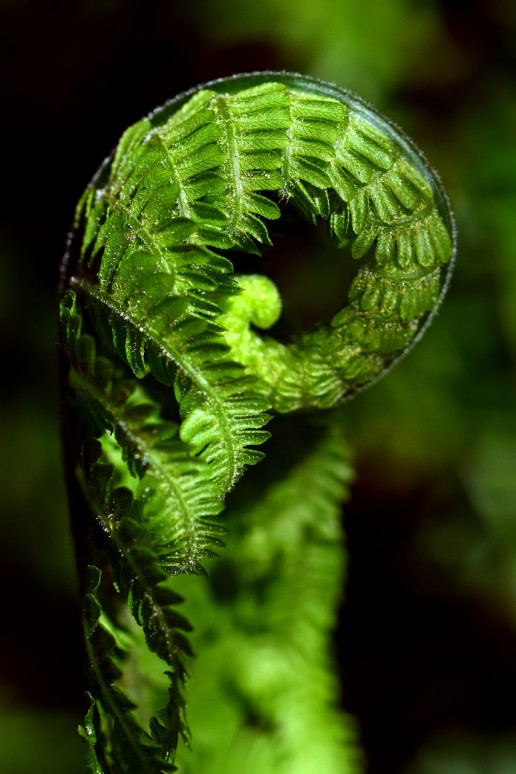
When life hands you gators...
One food staple of the Gladesmen Culture that can’t be overlooked is alligator meat. With the Everglades having so many of them, you could say, “When life hands you gators, make Gatorade.” While probably not the best ingredient for a sports drink, American alligator meat tastes great no matter how it’s cooked. It’s also packed with protein, having nearly 30 grams in a 3.5 ounce serving.
With so many resources available in the South Florida Everglades to live on, it truly does feel like living in paradise!

